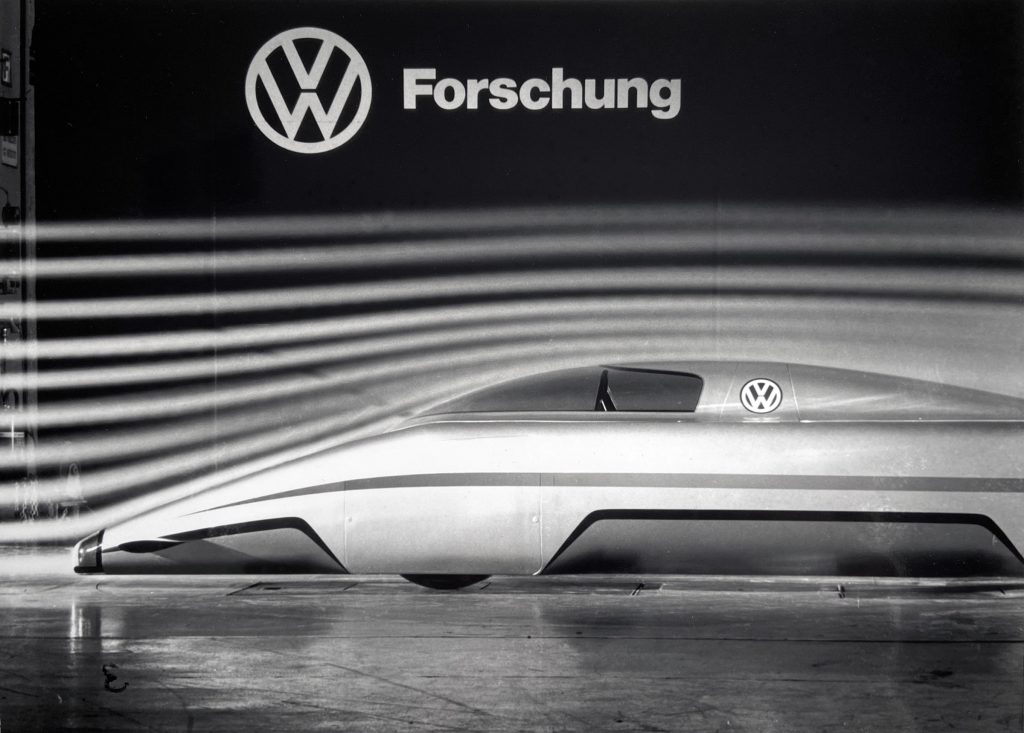ARVW: The most aerodynamic car Volkswagen has ever made
Who knew that the oil crisis of the 1970s would pave the way for a prototype built for aerodynamic research and would still hold relevance 50 years on! The Volkswagen ARVW is more aerodynamic than any production car on sale today and is being used to develop more efficient electric cars.
 Wind tunnel testing is a crucial step in making an aerodynamic car
Wind tunnel testing is a crucial step in making an aerodynamic carEnzo Ferrari famously once said, “Aerodynamics are for people who can't build engines.” I tend to agree with the legend but a brick shaped five-tonne SUV with a V12 engine probably won’t lap a circuit faster than a sleek car with a big wing to shove it to the ground. Aerodynamics play a big part in the performance of a car and with the shift to smaller engines and electric motors, it will play a key role in determining how far a car can go and how fast it can go too. You see, while downforce may be key on a track, increasing the aerodynamic efficiency of a car will allow it to travel further on the same amount of energy, and accelerate to a higher speed since resistance is less!
 The size was kept to a bare minimum
The size was kept to a bare minimumThis brings me on to the ARVW, short for Aerodynamic Research Volkswagen. It was fuelled by the oil crisis of the 1970s (pun intended), and while it may not win any prizes for its name, the 360kmph top speed it achieved did break two world speed records. You may be thinking, “360kmph? Pfft, my modified Supra could do that!”. Firstly, since you do not have a Supra it can’t, and secondly, even a 2JZ powered Supra would need some serious kit added to it to hit 360kmph. The ARVW did it with just 174bhp. Yep, you read that right. The ARVW was powered by a 2.4-litre turbocharged inline six-cylinder engine that was positioned behind the driver and powered the rear wheels, via a chain drive.
 Top speed runs were done at the Nardo Test Track.
Top speed runs were done at the Nardo Test Track.The question of how is answered by some very clever engineering solutions. To reduce the number of vents needed to keep the car cool, an onboard water tank sprayed water into the turbocharger’s intake, a part which usually requires a lot of cooling. The primary vent is placed strategically in the nose of the ARVW so as not to disrupt the airflow going over the car. Moreover, the ARVW is just 838mm tall and 1100mm wide. For comparison, a Toyota Fortuner is more than twice as tall at 1835mm and almost twice as wide at 1855mm! This allowed the ARVW to achieve a remarkable drag coefficient of just 0.15. To give you an example of just how good that figure is — Tesla has claimed to have the slipperiest production cars ever, a vital factor for electric vehicles, and the Model S has a drag coefficient of 0.24! The innovations made during the development of the ARVW played a big role in the radical XL1, famous for its ability to travel 100km on a single litre of diesel. Now, Volkswagen is using the ARVW to help make their I.D range of electric cars more efficient. A truly remarkable piece of engineering, still relevant almost 50 years on!


